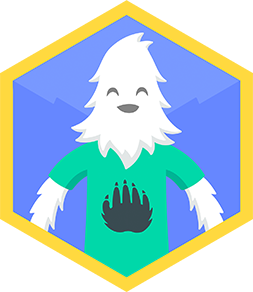Search For A Challenge
Create and complete a neighborhood scavenger hunt list, searching for natural and manmade items, then record findings with photos or drawings.



Step-by-step guide to Search For A Challenge
Step 1
Pick a safe area in your neighborhood where you will look for items.
Step 2
Ask an adult for permission to go on the scavenger hunt.
Step 3
Tell the adult where you will explore and when you will be back.
Step 4
On your paper write a fun title for your scavenger hunt and the date.
Step 5
Draw two columns and label one Natural and the other Manmade.
Step 6
In each column write at least four things to find so you have 8 to 12 items total.
Step 7
Gather your paper pencil clipboard bag and colouring materials before you leave.
Step 8
Walk slowly through your chosen area and look carefully for the things on your list.
Step 9
When you find an item take a photo or make a drawing of it in your notebook.
Step 10
Check the found item off your list.
Step 11
Write one short note about where you found each checked item.
Step 12
If an item is small safe and allowed place it in your bag.
Step 13
Back at home choose your favorite three finds and decorate their photos or drawings with your colouring materials.
Step 14
Share your finished scavenger hunt list and your photos or drawings on DIY.org
Final steps
You're almost there! Complete all the steps, bring your creation to life, post it, and conquer the challenge!


Help!?
What can we use if we don't have a clipboard, bag, camera, or colouring materials?
If you don't have a clipboard use a piece of stiff cardboard or hardcover book, replace a bag with a small box or pocket for allowed finds, use a phone or quick drawings in your notebook instead of a camera, and swap colouring materials for crayons or colored pencils when decorating your favorite three finds.
What should we do if we can't find enough items or can't take photos during the walk?
If you can't find enough items expand your search area or make the Natural and Manmade list items broader, and if you can't take photos make detailed drawings in your notebook, check them off, and write the short location note as the instructions require.
How can we adapt the scavenger hunt for younger or older children?
For younger kids make a picture-based list and have an adult walk with them and collect only obvious safe items in the bag, while older kids can create longer lists (12+ items), add extra notes about where each item was found, set a time limit, and prepare more detailed decorated photos before sharing on DIY.org.
How can we extend or personalize the scavenger hunt after returning home?
To personalize the activity pick a theme (for example 'red things' or 'plants'), use your clipboard and colouring materials to make a decorated map or collage of where each of your three favorite finds was located, and then upload the themed photos or drawings to DIY.org as a mini-gallery.
Watch videos on how to Search For A Challenge
Problem Solving for Kids | Fun Animated Story About Overcoming Challenges (Ages 3-10)
Facts about neighborhood exploration and scavenger hunts
🔍 Doing a checklist-style search helps your brain spot details you normally miss, boosting observation and memory skills.
🌳 Even small urban neighborhoods can host dozens of bird and tree species, so every block can be a mini nature tour.
🗺️ Scavenger hunts have entertained explorers and partygoers for over 100 years — they turn ordinary walks into treasure hunts.
📸 Taking photos is a real scientist's trick — many apps accept citizen photos to help map plants and animals worldwide.
🧭 You can level-up a hunt by adding clues about materials, history, or weather to sneak in STEM and local-history lessons.
How do I run a 'Search For A Challenge' neighborhood scavenger hunt?
What materials do I need for a neighborhood scavenger hunt?
What ages is a neighborhood scavenger hunt suitable for?
What safety tips should I follow for a neighborhood scavenger hunt?


One subscription, many ways to play and learn.
Only $6.99 after trial. No credit card required



